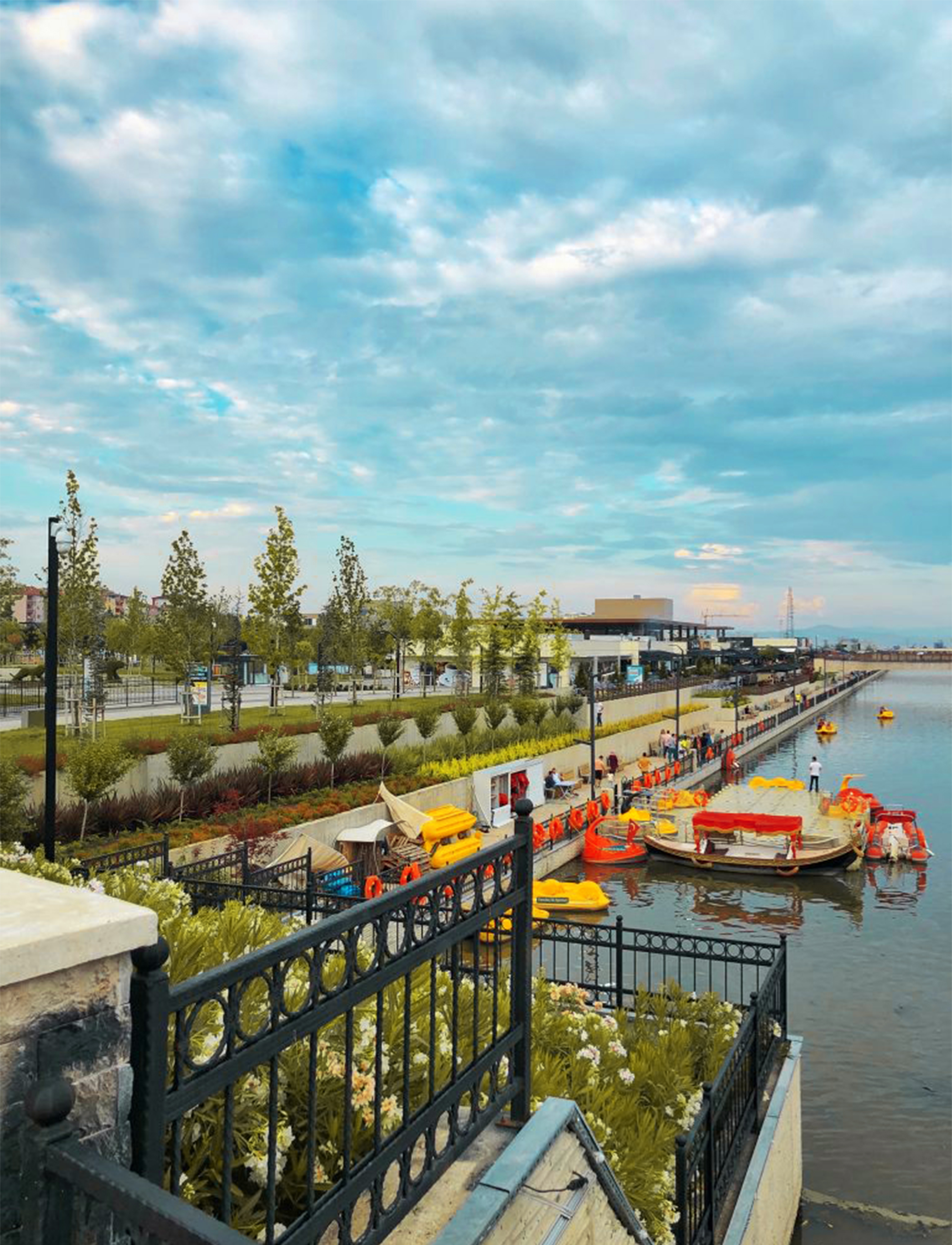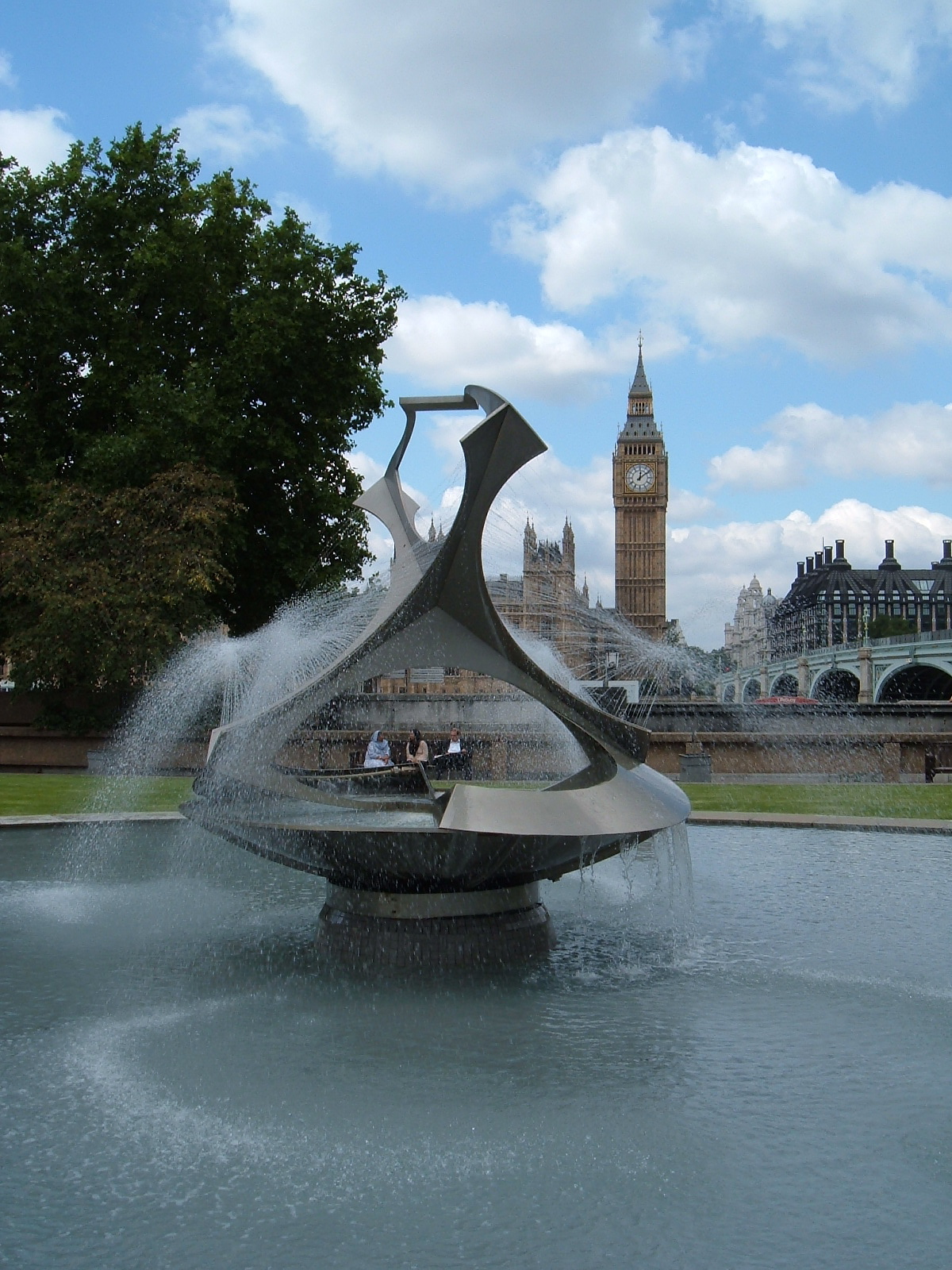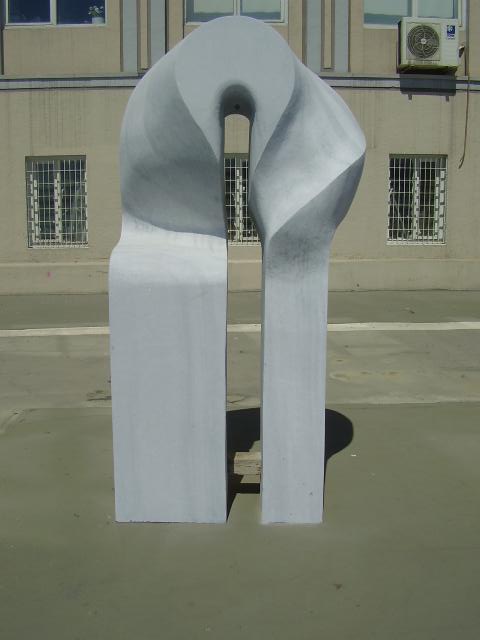|
Seyhun Topuz
Seyhun Topuz (born 1942) is a Turkish sculptor who works in a geometric abstract narrative. Life and works Topuz was born in 1942 in Balikesir and attended Law School. When her second academic year started she stopped with Law School and started to study for the Art School exams. She was accepted to the State Fine Arts Academy, MSGSÜ, and graduated from its Higher Sculpture Department. Between 1974 and 1978 she worked as an assistant in that same department. In the 1970's she opened her first personal exhibition. In 1973 Topuz was one of the 20 artists chosen to make works in commemoration of the 50th anniversary of the Turkish Republic and her artwork stayed at 4. Levent for a limited time. In 1977 she completed the degree of academic qualification with thesis in her field on ( tr, "heykelde ışık ve saydamlık") "light and transparency in sculpture" Between 1978 and 1980 and also 1983 to 1984 she continued her sculpture career in New York City. Between the years 1978– ... [...More Info...] [...Related Items...] OR: [Wikipedia] [Google] [Baidu] |
Balıkesir
Balıkesir () is a city in Turkey and is the capital city of Balıkesir Province. Balıkesir is located in the Marmara region of Turkey and has a population of 338,936. Between 1341–1922, it was the capital of Karasi. History Close to modern Balıkesir was the Roman town of '' Hadrianutherae'', founded, as its name commemorates, by the emperor Hadrian. Hadrian came to the region in A.D. 124, as a result of a successful bear hunting he had established a city called his name here. It is estimated that the city consisted of the castle, the homestead, the stud and a few homes. It is thought that the small town was where the current stadium is present. Members of the Roman and Pre-Byzantine dynasty had used this castle as a vacation area and for hunting. During the Byzantine period, the small town which had become increasingly neglected was known as ''Palaeokastron'' ( el, Παλαιόκαστρο) meaning Old Castle. Also, when the Turkomans came from Middle Asia to Mysia, ... [...More Info...] [...Related Items...] OR: [Wikipedia] [Google] [Baidu] |
Naum Gabo
Naum Gabo, born Naum Neemia Pevsner (23 August 1977) (Hebrew: נחום נחמיה פבזנר), was an influential sculptor, theorist, and key figure in Russia's post-Revolution avant-garde and the subsequent development of twentieth-century sculpture.Tate GalleryNaum Gabo biography. Retrieved March 23, 2018./ref> His work combined geometric abstraction with a dynamic organization of form in small reliefs and constructions, monumental public sculpture and pioneering kinetic works that assimilated new materials such as nylon, wire, lucite and semi-transparent materials, glass and metal. Responding to the scientific and political revolutions of his age, Gabo led an eventful and peripatetic life, moving to Berlin, Paris, Oslo, Moscow, London, and finally the United States, and within the circles of the major avant-garde movements of the day, including Cubism, Futurism, Constructivism, the Bauhaus, de Stijl and the Abstraction-Création group.Hammer, Martin and Naum Gabo, Christina Lo ... [...More Info...] [...Related Items...] OR: [Wikipedia] [Google] [Baidu] |
Turkish Women Sculptors
Turkish may refer to: *a Turkic language spoken by the Turks * of or about Turkey ** Turkish language *** Turkish alphabet ** Turkish people, a Turkic ethnic group and nation *** Turkish citizen, a citizen of Turkey *** Turkish communities and minorities in the former Ottoman Empire * Ottoman Empire (Ottoman Turkey), 1299–1922, previously sometimes known as the Turkish Empire ** Ottoman Turkish, the Turkish language used in the Ottoman Empire * Turkish Airlines, an airline * Turkish music (style), a musical style of European composers of the Classical music era See also * * * Turk (other) * Turki (other) * Turkic (other) * Turkey (other) * Turkiye (other) * Turkish Bath (other) * Turkish population, the number of ethnic Turkish people in the world * Culture of Turkey * History of Turkey ** History of the Republic of Turkey The Republic of Turkey was created after the overthrow of Sultan Mehmet VI Vahdettin by ... [...More Info...] [...Related Items...] OR: [Wikipedia] [Google] [Baidu] |
Mimar Sinan Fine Arts University Alumni
Traditionally, Iranian architects were known as ''Mi'mars''. The Persian dictionary of ''Mo'in'' defines Mi'mar as: #That who devises the design and plan of a building, and overlooks its construction. #A Banna #That who is responsible for the building, developing, and repairs of a structure or edifice (Emārat). Classical words ''Banna'', ''Mohandes'', ''Ostad'', and ''Amal'' which appear in classical manuals and references of Islamic architecture. Although many scholars do not recognize the Mimar and the Architect to historically be the same, they do agree that their responsibilities overlap extensively. In this list, they are taken to be the same. The list is in chronological order and selectively spans the Islamic age based on available records. There is little, if any, record of the numerous masters of architecture that built some of the early Islamic and pre-Islamic world's wonders of Iran. It is unknown who built the palaces of Bishapur, Firouzabad, Persepolis, Susa, or ... [...More Info...] [...Related Items...] OR: [Wikipedia] [Google] [Baidu] |
People From Balıkesir
A person ( : people) is a being that has certain capacities or attributes such as reason, morality, consciousness or self-consciousness, and being a part of a culturally established form of social relations such as kinship, ownership of property, or legal responsibility. The defining features of personhood and, consequently, what makes a person count as a person, differ widely among cultures and contexts. In addition to the question of personhood, of what makes a being count as a person to begin with, there are further questions about personal identity and self: both about what makes any particular person that particular person instead of another, and about what makes a person at one time the same person as they were or will be at another time despite any intervening changes. The plural form "people" is often used to refer to an entire nation or ethnic group (as in "a people"), and this was the original meaning of the word; it subsequently acquired its use as a plural form of per ... [...More Info...] [...Related Items...] OR: [Wikipedia] [Google] [Baidu] |
21st-century Turkish Women Artists
The 1st century was the century spanning AD 1 (Roman numerals, I) through AD 100 (Roman numerals, C) according to the Julian calendar. It is often written as the or to distinguish it from the 1st century BC (or BCE) which preceded it. The 1st century is considered part of the Classical era, epoch, or History by period, historical period. The 1st century also saw the Christianity in the 1st century, appearance of Christianity. During this period, Europe, North Africa and the Near East fell under increasing domination by the Roman Empire, which continued expanding, most notably conquering Britain under the emperor Claudius (AD 43). The reforms introduced by Augustus during his long reign stabilized the empire after the turmoil of the previous century's civil wars. Later in the century the Julio-Claudian dynasty, which had been founded by Augustus, came to an end with the suicide of Nero in AD 68. There followed the famous Year of Four Emperors, a brief period of civil war and inst ... [...More Info...] [...Related Items...] OR: [Wikipedia] [Google] [Baidu] |
Living People
Related categories * :Year of birth missing (living people) / :Year of birth unknown * :Date of birth missing (living people) / :Date of birth unknown * :Place of birth missing (living people) / :Place of birth unknown * :Year of death missing / :Year of death unknown * :Date of death missing / :Date of death unknown * :Place of death missing / :Place of death unknown * :Missing middle or first names See also * :Dead people * :Template:L, which generates this category or death years, and birth year and sort keys. : {{DEFAULTSORT:Living people 21st-century people People by status ... [...More Info...] [...Related Items...] OR: [Wikipedia] [Google] [Baidu] |
1942 Births
Year 194 ( CXCIV) was a common year starting on Tuesday (link will display the full calendar) of the Julian calendar. At the time, it was known as the Year of the Consulship of Septimius and Septimius (or, less frequently, year 947 ''Ab urbe condita''). The denomination 194 for this year has been used since the early medieval period, when the Anno Domini calendar era became the prevalent method in Europe for naming years. Events By place Roman Empire * Emperor Septimius Severus and Decimus Clodius Septimius Albinus Caesar become Roman Consuls. * Battle of Issus: Septimius Severus marches with his army (12 legions) to Cilicia, and defeats Pescennius Niger, Roman governor of Syria. Pescennius retreats to Antioch, and is executed by Severus' troops. * Septimius Severus besieges Byzantium (194–196); the city walls suffer extensive damage. Asia * Battle of Yan Province: Warlords Cao Cao and Lü Bu fight for control over Yan Province; the battle lasts for over 100 ... [...More Info...] [...Related Items...] OR: [Wikipedia] [Google] [Baidu] |
Fiberglass
Fiberglass (American English) or fibreglass (Commonwealth English) is a common type of fiber-reinforced plastic using glass fiber. The fibers may be randomly arranged, flattened into a sheet called a chopped strand mat, or woven into glass cloth. The plastic matrix may be a thermoset polymer matrix—most often based on thermosetting polymers such as epoxy, polyester resin, or vinyl ester resin—or a thermoplastic. Cheaper and more flexible than carbon fiber, it is stronger than many metals by weight, non- magnetic, non-conductive, transparent to electromagnetic radiation, can be molded into complex shapes, and is chemically inert under many circumstances. Applications include aircraft, boats, automobiles, bath tubs and enclosures, swimming pools, hot tubs, septic tanks, water tanks, roofing, pipes, cladding, orthopedic casts, surfboards, and external door skins. Other common names for fiberglass are glass-reinforced plastic (GRP), glass-fiber reinforced plastic (GFRP) or GF ... [...More Info...] [...Related Items...] OR: [Wikipedia] [Google] [Baidu] |
Plexiglass
Poly(methyl methacrylate) (PMMA) belongs to a group of materials called engineering plastics. It is a transparent thermoplastic. PMMA is also known as acrylic, acrylic glass, as well as by the trade names and brands Crylux, Plexiglas, Acrylite, Astariglas, Lucite, Perclax, and Perspex, among several others ( see below). This plastic is often used in sheet form as a lightweight or shatter-resistant alternative to glass. It can also be used as a casting resin, in inks and coatings, and for many other purposes. Although not a type of familiar silica-based glass, the substance, like many thermoplastics, is often technically classified as a type of glass, in that it is a non-crystalline vitreous substance—hence its occasional historic designation as ''acrylic glass''. Chemically, it is the synthetic polymer of methyl methacrylate. It was developed in 1928 in several different laboratories by many chemists, such as William Chalmers, Otto Röhm, and Walter Bauer, and first brought t ... [...More Info...] [...Related Items...] OR: [Wikipedia] [Google] [Baidu] |
Mimar Sinan Fine Arts University
The Mimar Sinan Fine Arts University ( tr, Mimar Sinan Güzel Sanatlar Üniversitesi, or MSGSÜ) is a Turkish public university dedicated to higher education in the fine arts. It is located in the Fındıklı neighbourhood of Beyoğlu, Istanbul, Turkey. Founded in 1882 by Osman Hamdi Bey, the institution imitated the traditional European Beaux-Arts model and was the first Western-style art academy of its kind in the Middle East. The Mimar Sinan Fine Arts High Schools in Istanbul and Ankara have no relation with the Mimar Sinan Fine Arts University. History On January 1, 1882, he renowned Turkish painter, art historian, archaeologist, and museum curator, Osman Hamdi Bey established the School of Fine Arts (Sanayi-i Nefise Mekteb-i Âlisi, formally Mekteb-i Sanayi-i Nefise-i Şâhâne or Sanayi-i Nefise Mektebi) here. When it opened on March 2, 1883, with eight instructors and 20 students, it was Turkey's first educational institution for the fine arts and architecture. In ... [...More Info...] [...Related Items...] OR: [Wikipedia] [Google] [Baidu] |



_1938.jpg)



